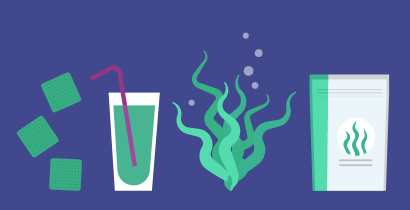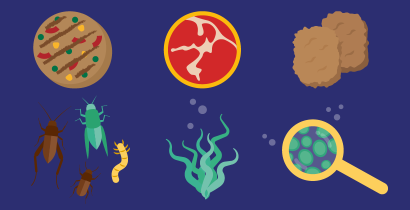Microalgae: what are they and how to grow and use them
Last Updated : 02 February 2023Algae come in many different shapes and sizes – but while most of us would only recognise a few species, many more are becoming increasingly important organisms for our future. Especially microalgae have a huge potential to be seen much more on our plates – as part of a healthy and sustainable diet. This article describes what microalgae are, introduces some edible species of microalgae and explains why we may be interested in eating more of them.
What are microalgae and what types are most common?
Species of algae fall into one of two categories: macroalgae, such as seaweed, and microalgae.
Microalgae are usually made from one single cell, or a small number of cells put together in a very simple structure that can quickly grow and multiply into a large biomass rich in nutrients.
You may have heard of Chlorella and Spirulina. Both are species of microalgae. These blue-green species are among the oldest species of life on the planet. Chlorella is native to Taiwan and Japan, while Spirulina is found in Africa and Asia.
Not only are they both safe to eat, they’re also associated with numerous health benefits.
Aside from Chlorella and Spirulina, there are more than fifty thousand different types of microalgal species.1 They’re all abundant in nature, and are found in both freshwater and saltwater, such as in lakes, rivers and seas. They can grow in many different environments, and tolerate a wide range of temperatures and conditions, from the salty Dead Sea2 to the Arctic and Antarctic.3
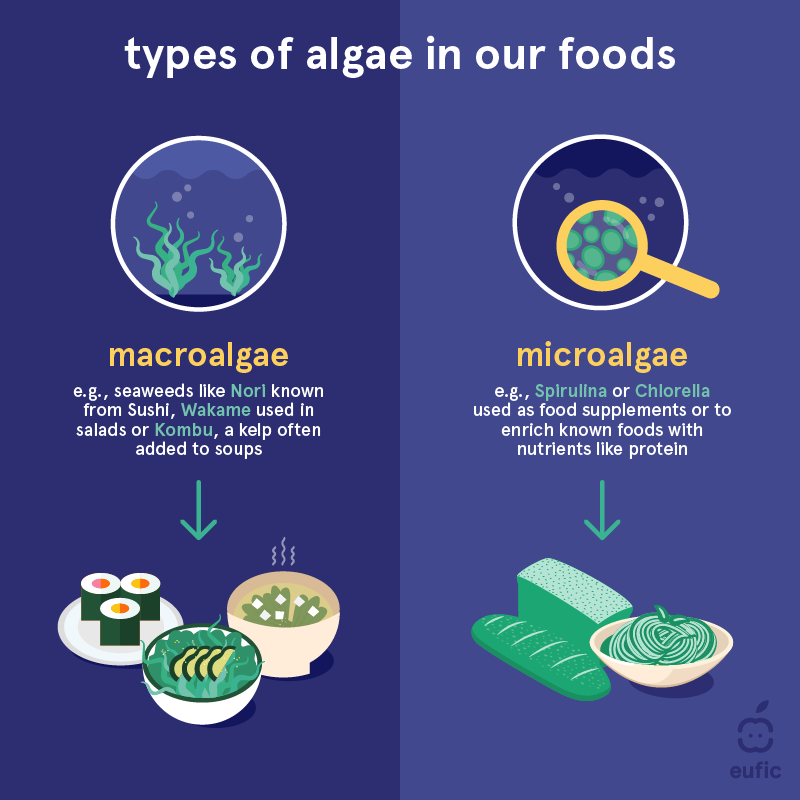
Could microalgae be a common part of healthy diets?
Macroalgae is already commonly eaten in many parts of the world. Seaweed for example has been a staple ingredient for thousands of years in Asian cuisine, particularly in Japan, Korea and China. It’s packed with nutrients, and regular consumption has been linked to heart health,4 gut health5 and healthy immune systems.6
One of the most popular algae is nori, which is used in sushi. Nori is a rich source of iodine, which is a key nutrient in the production of our thyroid hormones, affecting our overall metabolism. However, certain species of macroalgae, such as kelps, which is one of the largest species of seaweed7, may contain high levels of this nutrient. Excessive amounts of iodine may increase the risk of negative health effects associated with our thyroid.
Microalgae as food may be less widespread but those that have been deemed safe to eat are becoming strong contenders in the race to find sustainable and nutritious protein alternatives to feed our growing global population. They are a more environmentally friendly alternative to animal protein, since they require much less land and fresh water to produce than animal protein.8 They are also a rich source of vitamin A, B, C and B12. Microalgae also contains iodine, but less than macroalgae.9
Some species can give popular foods a protein-boost, such as Spirulina, which can be added to bread dough10 and vegetable creams, as showcased here by the ProFuture project.11
As well as offering sustainable sources of protein12 and fibre, microalgae are also a source of healthy fats, including omega-3, omega-6 fatty acids. Omega 3 and 6 families are essential fatty acids, meaning that the human body can’t produce them by itself. Therefore, our intake has to come via what we eat. Fish can be one source of essential fatty acids, however, due to their increasing cost and mounting concerns about its sustainability, microalgae is seen as a potential alternative source for meeting these nutritional requirements.
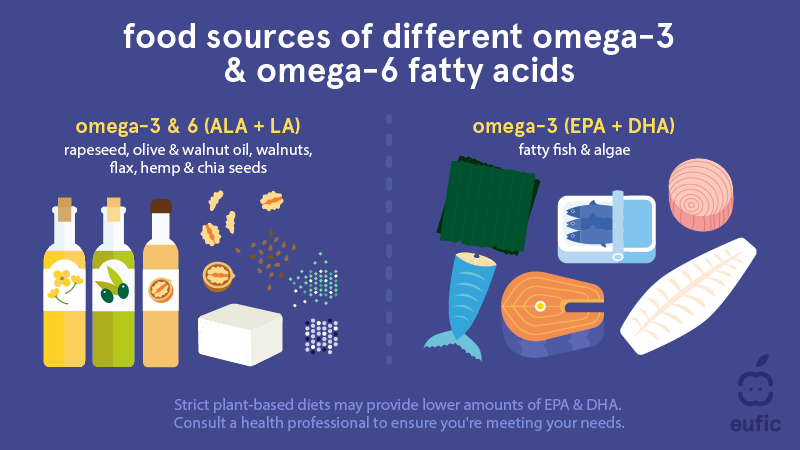
How can we increase microalgae consumption in Europe?
In fact, there are currently only 10 species of microalgae that are currently authorised for food consumption in Europe.13 In Europe, the European Food Safety Authority must assess the safety of any new food before it can be produced or sold to people, and this is a long and expensive process.
To most Europeans, microalgae are still an unusual food. Adding microalgae to known foods and studying how consumers feel about them, are crucial steps to make sure that new products can enter our markets.
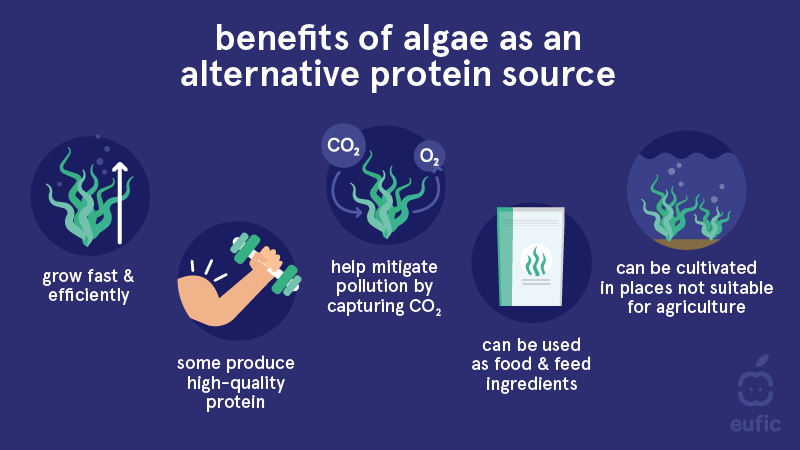
What else can microalgae be used for?
With fossil fuels contributing to a rapid deterioration of natural habitats, global warming and health problems across the world, there is a growing demand for renewable energy sources.
Microalgae are increasingly being used as an additional type of biofuel, a renewable and sustainable alternative to fossil fuel that is locally accessible.14
Microalgae can efficiently turn solar energy into biomass, and are great at capturing carbon dioxide from the atmosphere15 to help reduce carbon emissions. And since the vast majority of species aren’t edible, using microalgae to produce biofuel doesn’t take anything from the human or animal food chain.
Microalgae also have applications beyond food and energy, including in cosmetics, pharmaceuticals, biofertilizers.
How do microalgae grow?
Microalgae are very adaptable, and can be cultivated in many different environments. While some species can grow in Iceland, others thrive in a desert climate. They can grow into large, nutrient-rich biomasses that help support other lives around them. In fact, they provide 75% of the global supply of oxygen.16
Microalgae are generally very good at turning carbon dioxide, nutrients and water into proteins, fats and carbohydrates through photosynthesis. And they can reproduce quickly; they don’t have stems, roots or leaves – which require a lot of energy to produce – so they can use carbon dioxide and nutrients more efficiently than land plants.17
As microalgae grow quicker than crops and livestock, they can produce more protein using less time and resources, and use less land. Microalgae can produce between four and 15 tonnes of protein per hectare per year, compared to between 0.6 and 1.2 for soybean.18
This makes them very good candidates for industrial agriculture.
How can you culture microalgae?
The industrial cultivation of microalgae to produce biofuels and bioproducts19 has been growing dramatically in recent years, and it’s done in many different ways, since different algae require different conditions. While Spirulina and Chlorella require freshwater, the microalgae species Tetraselmis20 can only grow in saltwater.
One method involves using a biophotoreactor. During this process, cells of the microalgae species are cultivated in small glass balloons containing water and nutrients that allows them to reproduce and are also fed carbon dioxide and light.
The cells are then transferred outdoors and exposed to sunlight, and then into a tubular photobioreactor, where they receive more sunlight and nutrients before being harvested.
Microalgae production is still in its early stages. Scaling up the process to a point where it can meet the demand for food comes with several challenges.21 For example, production requires a lot of resources, including the huge cost of automating the process to make it more efficient.
The good news is that numerous governments and companies are trying to reduce the operating costs to help make the production of microalgae commercially viable.22
Conclusion
Microalgae is helping to answer some of the modern world’s most pressing problems – such as feeding a growing population and finding sustainable alternatives to fossil fuels. And it has the potential to help with many more, given further research, interest and investment.
While these bigger, complex problems may be a world away for most of us, there are many ways to introduce algae into our own lives, too – whether that’s with Spirulina-enhanced bread, or a hearty portion of sushi.
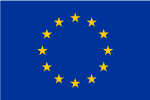 This article was produced in collaboration with ProFuture. ProFuture has received funding from the European Union’s Horizon 2020 Research and Innovation programme under Grant Agreement No. 862980.
This article was produced in collaboration with ProFuture. ProFuture has received funding from the European Union’s Horizon 2020 Research and Innovation programme under Grant Agreement No. 862980.
References
- Elisabeth, B., Rayen, F., & Behnam, T. (2021). Microalgae culture quality indicators: a review. Critical Reviews in Biotechnology, 41(4), 457-473.
- Oren, A., Ionescu, D., Hindiyeh, M., & Malkawi, H. (2008). Microalgae and cyanobacteria of the Dead Sea and its surrounding springs. Israel Journal of Plant Sciences, 56(1-2), 1-13.
- Mock, T., & Thomas, D. N. (2008). Microalgae in polar regions: linking functional genomics and physiology with environmental conditions. In Psychrophiles: from biodiversity to biotechnology (pp. 285-312). Springer, Berlin, Heidelberg.
- Fitzgerald, C., Gallagher, E., Tasdemir, D., & Hayes, M. (2011). Heart health peptides from macroalgae and their potential use in functional foods. Journal of Agricultural and Food Chemistry, 59(13), 6829-6836.
- Chen, L., Xu, W., Chen, D., Chen, G., Liu, J., Zeng, X., ... & Zhu, H. (2018). Digestibility of sulfated polysaccharide from the brown seaweed Ascophyllum nodosum and its effect on the human gut microbiota in vitro. International Journal of Biological Macr
- Fazekas, T., Eickhoff, P., Pruckner, N., Vollnhofer, G., Fischmeister, G., Diakos, C., ... & Lion, T. (2012). Lessons learned from a double-blind randomised placebo-controlled study with a iota-carrageenan nasal spray as medical device in children with acu
- Peter P.A. Smyth (2021) Iodine, Seaweed, and the Thyroid. European Thyroid Journal, 10(2): 101–108
- Martín P. Caporgno, Alexander Mathys (2018), Trends in Microalgae Incorporation Into Innovative Food Products With Potential Health Benefits, Frontiers in Nutrition, 5: 58.
- Inger Aakre, Dina Doblaug Solli, Maria Wik Markhus, Hanne K. Mæhre, Lisbeth Dahl, Sigrun Henjum, Jan Alexander, Patrick-Andre Korneliussen, Lise Madsen, and Marian Kjellevold (2021), Commercially available kelp and seaweed products – valuable iodine sourc
- ProFuture. (2020). Bread with a marine twist – using Spirulina to enrich bakery products.
- ProFuture. (2021). More foods going green at IRTA – adding microalgae to vegetable creams, crackers & grissini.
- Andrade, L. M., Andrade, C. J., Dias, M., Nascimento, C., & Mendes, M. A. (2018). Chlorella and spirulina microalgae as sources of functional foods. Nutraceuticals, and Food Supplements, 6(1), 45-58.
- Pierre, Guillaume, et al. "What is in store for EPS microalgae in the next decade?." Molecules 24.23 (2019): 4296.
- Khan, M. I., Shin, J. H., & Kim, J. D. (2018). The promising future of microalgae: current status, challenges, and optimization of a sustainable and renewable industry for biofuels, feed, and other products. Microbial cell factories, 17(1), 1-21.
- Sayre, R. (2010). Microalgae: the potential for carbon capture. Bioscience, 60(9), 722-727.
- ProFuture. (2019). Website About section.
- Microalgae is nature’s ‘green gold’: our pioneering project to feed the world more sustainably, (2022), Carole Anne Llewellyn
- Koyande, A. K., Chew, K. W., Rambabu, K., Tao, Y., Chu, D. T., & Show, P. L. (2019). Microalgae: A potential alternative to health supplementation for humans. Food Science and Human Wellness, 8(1), 16-24.
- Khan, M. I., Shin, J. H., & Kim, J. D. (2018). The promising future of microalgae: current status, challenges, and optimization of a sustainable and renewable industry for biofuels, feed, and other products. Microbial cell factories, 17(1), 1-21.
- ProFuture. (2020). Behind the scenes of microalgae production.
- Hannon, M., Gimpel, J., Tran, M., Rasala, B., & Mayfield, S. (2010). Biofuels from algae: challenges and potential. Biofuels, 1(5), 763-784.
- Qari, H., Rehan, M., & Nizami, A. S. (2017). Key issues in microalgae biofuels: a short review. Energy Procedia, 142, 898-903.
